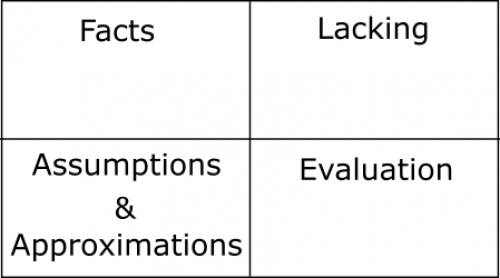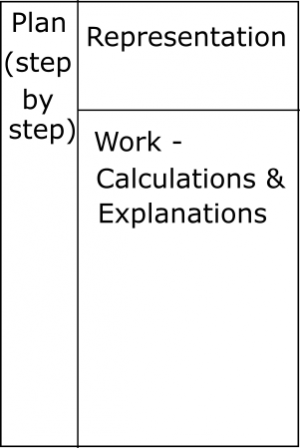Getting Started
Part of what you'll be working on this semester is learning how to plan and organize your work through complex problem solving with a group. Keeping your work organized is important for several reasons - 1) making sure you're not missing any critical information from the problems, 2) making sure that everyone in the group understands each step along the way, and 3) making sure that you understand what happened in the problem when you look back at your work (e.g. for homework or exam preparation). To that end, we've outlined a process below that will help you get through the problems in the class. We recommend that you use this as a guideline, but also feel free to adjust, change, or add to this based on what works best for you and your group members.
Kick Off Questions
Each in class problem will start off with 3-4 conceptual questions that cover key ideas from the readings or offer good discussion points for your group. These questions will serve as a “warm up” and make sure your group is on the same page before jumping into the problem. Your group should write out the answers to the questions the whiteboard, check in with your small group instructor, and then take pictures of your answers. You can then erase the board and move onto the main problem.
Main Problem
The main problem will typically be a single, complex problem that you will work through with your group. You'll have two whiteboards on your table - you should use one whiteboard for planning and one whiteboard for calculations/work. We'd suggest setting up your planning whiteboard by dividing the board into “Four Quadrants”:
- Facts - this is a space where you write out what you know or what is given in the problem.
- Lacking - this is space where you write out information that you missing, your goal, and what you need to solve the problem.
- Assumptions and Approximations - this is for keeping track of any simplifying assumptions or approximations that you need in the problem. (E.g. “Modeling a point charge” or “no friction”)
- Evaluations - this is for writing out how your answer/model does or does not make sense. This means asking questions like - is our final number right? Is it the right order of magnitude? Do the units make sense? Does the vector point in the right direction? Are our assumptions realistic?
For your calculations board, we recommend setting up a space for a representation (figure - labeled with arrows/origin/diagrams/etc), a plan, and then a space for your work (calculation/explanations). Again, you can play with the format here, but make sure you have picture/plan/work somewhere on this board.
Wrap Up Questions
At the end of each problem, there will be a set of conceptual questions that will help your group think more deeply about the problem you completed in class. Your group should write out the answers to the questions the whiteboard, check in with your small group instructor, and then take pictures of your answers. If you are waiting on your small group instructor to circle back to your group, you can always start looking at these questions. If your group needs more time with the Main Problem and you don't quite get to the Wrap Up Questions, that is totally fine. You can always circle back to these questions as a study guide for exams/projects.

